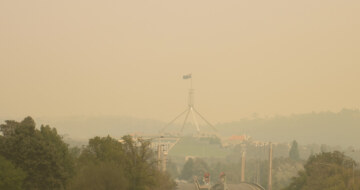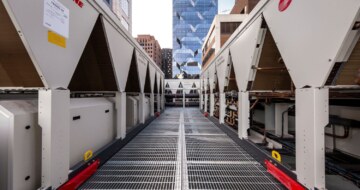
December 1, 2025 in Advisory Notes
Combating High Humidity in Commercial Buildings
High humidity is one of the more challenging and persistent issues facing commercial buildings today. Longer humid spells, warmer temperatures and mor...
October 5, 2018
1. Risk assessment of Legionella contamination, documented in a Risk Management Plan (RMP) – every five years (or more frequently if required)
2. Independent auditing of compliance with the RMP and Regulation – every year
3. Providing certificates of RMP completion and audit completion to the local government authority
4. Sampling and testing for Legionella and heterotrophic colony count – every month
5. Notifying reportable laboratory test results (Legionella count ≥1000 CFU/mL or heterotrophic colony count ≥5,000,000 CFU/mL) to the local government authority
6. Displaying unique identification numbers on all cooling towers.

The requirements for building occupiers to test for Legionella bacteria on a monthly basis and notify high ‘reportable test results’ to their local government authority commenced on January 1, 2018.
The Occupier is defined in the NSW Public Health Act 2010 as:
For each water-cooling system it is important that the Occupier be clearly identified and understand the new responsibilities.
The test sampling must be carried out by a Duly Qualified Person. This is a person who might reasonably be expected to be competent to install, operate or maintain a water-cooling system and can include people who work for water treatment companies, mechanical services companies, and other industry organisations that manage water-cooling systems on a day to day basis.
Samples must be tested by a laboratory accredited by the National Association of Testing Authorities (NATA). Test results can be provided to the Duly Qualified Person on behalf of the Occupier, to the Occupier, or the local government authority depending on contractual arrangements.
The Regulation requires the water-cooling system to be operated to ensure Legionella counts and HCC remain below threshold levels.
A Legionella count greater than 1000 CFU/mL and a HCC greater than 5,000,000 CFU/mL must be notified to the local government authority for that area within 24 hours.
The Regulation requires a Competent Person to undertake an effective risk assessment, to identify and document in a Risk Management Plan measures to limit the growth and transmission of Legionella bacteria. The assessment should:
The first risk assessments under the amended Regulation will be completed in phases. Local government authorities will allocate systems in their area to a due date of 30 November 2018, 31 March 2019, or 30 June 2019.
The Occupier must ensure that an audit is carried out by an Independent Auditor for each 12-month period, with no gaps between periods.
For further information go to the NSW Department of Health website.
For advice or assistance, please contact
Gary Whatling
Manager (NSW/ACT), A.G. Coombs Advisory
P: +61 3 9248 2700 | E. gwhatling@agcoombs.com.au

December 1, 2025 in Advisory Notes
High humidity is one of the more challenging and persistent issues facing commercial buildings today. Longer humid spells, warmer temperatures and mor...

November 10, 2025 in Advisory Notes
Mandatory climate-related risk and opportunity reporting is a new Australian regulatory requirement for large companies to disclose how climate change...

October 8, 2025 in Advisory Notes
Electrification projects can be complex undertakings bringing together a range of technical elements along with planning, coordination and logistics c...

September 1, 2025 in Advisory Notes
Cyber security incidents reported against both government and private organisations continue to increase in both frequency and severity.